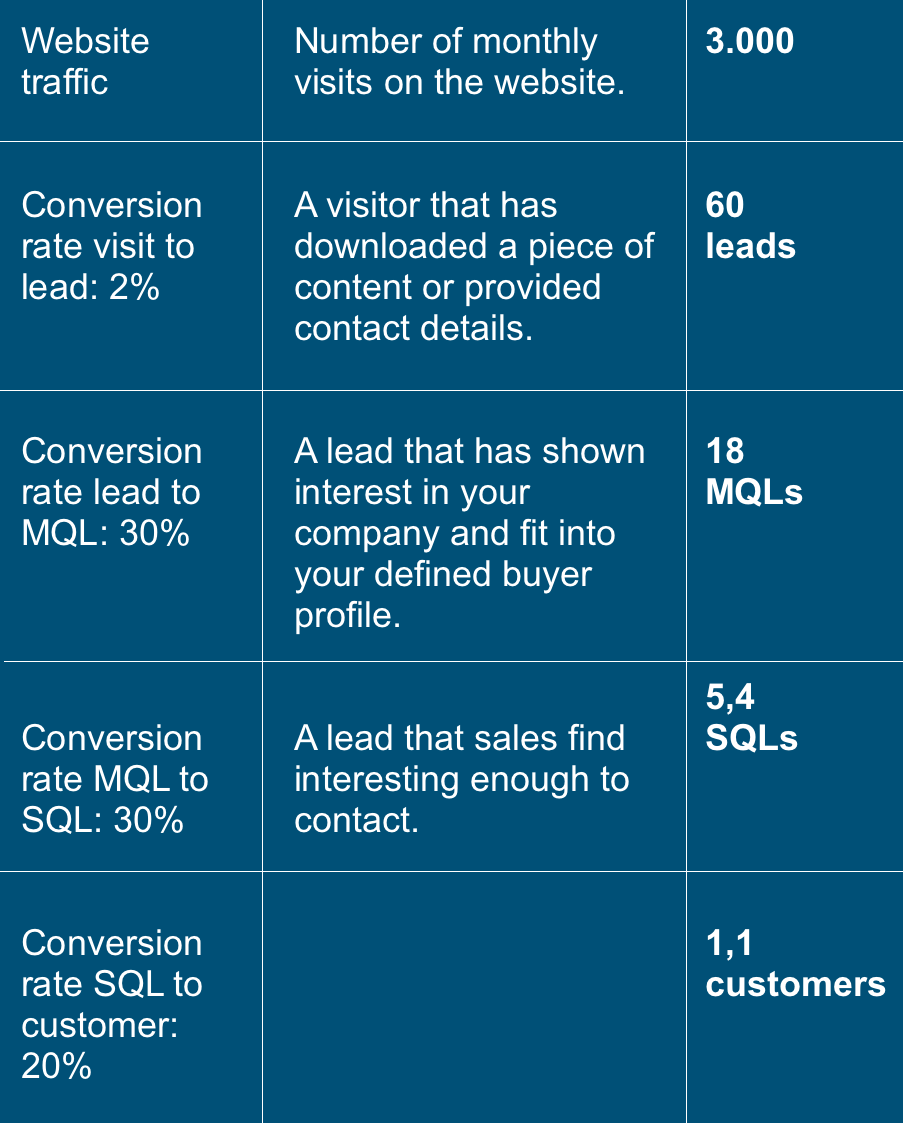According tothe State of inbound 2017, one of the biggest challenges for marketers is to measure...
How can you be sure that the money you have invested in inbound marketing will give you Return on Investment? Unlike other more traditional marketing activities, you are actually able to measure the ROI of inbound marketing. So what results can you expect from it?
With traditional marketing tactics like advertising, the issue has often been that marketers have had to explain that branding is important but difficult (or at least expensive) to measure the effect of. The good news is that with inbound marketing it is actually possible to calculate the value of the effort and prove the ROI.
A central part of the inbound methodology is to keep track of the customer's digital footsteps throughout the journey from when a visitor first clicks on the website and until he or she ends up as a customer.
The inbound marketing methodology is based on the idea of a sales funnel – that leads move down the funnel through a number of stages during a purchase process. The stages we work with are:
- Visitor: A visitor to your website.
- Lead: A visitor who has provided contact information, often when downloading content.
- Marketing Qualified Lead (MQL): A lead who fits your customer segment and has shown additional interest in your product with their behaviour on your website and by interacting with your content in, for example, emails.
- Sales Qualified Lead (SQL): An MQL, who, due to their interaction with your content, has come so far in their purchase process, that the sales department estimate that the lead should be contacted.
- Opportunity: An SQL, whose sales have come into a qualified sales dialogue with and possibly has sent an offer to.
- Customer: An SQL that has signed the deal.
Conversion rates fluctuate between industries
Between each stage of the funnel, there will be a certain drop, which is reflected in a conversion rate.
These conversion rates depend, among other things, on the industry and the quality of the content you make, and will, therefore, vary from business to business. If you have not worked with inbound marketing before, you have to ground your work on some general benchmarks – even if this is considered uncertain.
If you search online, you will find general benchmarks that differ from one another. Normally a realistic lead to customer conversion rate will fluctuate between 1 and 10 %.
The example below is based on numbers from several sources, including Aberdeen Group, which has conducted a survey that presents the different conversion rates throughout the whole funnel. Find the infographic with Aberdeen Group's numbers here.
However, Aberdeen Group's bid for an initial conversion rate of 5 % from visitor to lead is unrealistically high, so we have replaced it with HubSpot’s 2 % benchmark.
In contrast, Aberdeen Group's conversion rate from SQL to Customer is 10 % which is somewhat conservative, assuming that the company has high quality lead nurturing, so we have put 20 % instead.
Ultimately, the numbers are about the same, but it gives us a more true picture of the process. To simplify it, we have put the two last stages together (SQL and Opportunity) so that Opportunity is omitted as an independent step.
The numbers will by nature be individual to each company and need to be adapted accordingly, but this is an excellent starting point for establishing a business case for inbound marketing.
This gives you an overview of how many leads and website visitors you’ll need in order to get 1,1 customer each month:

From 3,000 visitors to 1 customer – would that be a good result?
At first glance, it's clear how tough the elimination race is. We start with 3,000 visitors and end up with one customer.
It is important to remember that the calculation here is an attempt to show the isolated value of inbound marketing activities. In fact, it will have a positive effect on far more areas – that are more difficult to measure.
If your sales department is actively using your content, this will support their other sales efforts and, for example, shorten the sales process, as it helps the lead understand the scope of his or her challenge and how to best solve these challenges.
In addition, inbound marketing helps to position the company as an industry expert, which also make sales efforts easier.
Inbound increases traffic – and thus value – over time

In addition, it is worth taking into account that increased traffic to the website is one of the clear objectives of inbound marketing. This also means that you can project an increase in number of visitors which again will be of great importance to the bottom line.
A rule of thumb based on HubSpot's own customer data is a doubling in traffic after one year with an active inbound marketing effort. Of course, this calculation will be more interesting if you can multiply the number of visits to the website with 2.
At the same time, the sales funnel methodology allows for continuous improvements to each individual conversion rate. This can be done, for example, by improving content so that it covers the needs the personas have at the different stages of the buyer’s journey, or by optimising the Calls-to-actions used on the website.
It’s also important to remember that the first conversion rate, visit to lead, of 2 % is not set in stone and that it often will be possible to increase it to 3 % with a focused effort. It may not sound much, but it actually adds 50 % to the bottom line.
What is a new customer worth?
The numbers mentioned above are primarily interesting to people at the management stage when you also include the lifetime value of a customer in the equation. With a simple calculation, you can get a number for how much your company can afford to use on marketing to get a new customer.
Let’s look at an example:
Total turnover per customer: 500,000 NOK.
Gross margin: 40 %
Lifetime value = 200,000 NOK.
If you are prepared to spend 30 % of the customer's value on getting that customer, you can invest 60,000 kr in marketing activities for each new customer. Assuming that the above examples of conversion rates, which gives 13 new customers a year, is realistic for your company, one could justify using 13 x 60,000 NOK = 780,000 NOK on your inbound marketing.
Inbound marketing is perfect for businesses with relatively long and complex purchasing processes
As the business case above illustrates, the inbound methodology generally works better for some companies than others.
It will typically give better results when implemented by companies with relatively complex purchasing processes and few but big sales, as the individual customer is so valuable that it makes sense to invest more in getting the customer onboard.
In contrast, if you sell laces or clothes, you’ll have to attract and convert a lot of customers before you get return on your investment.




